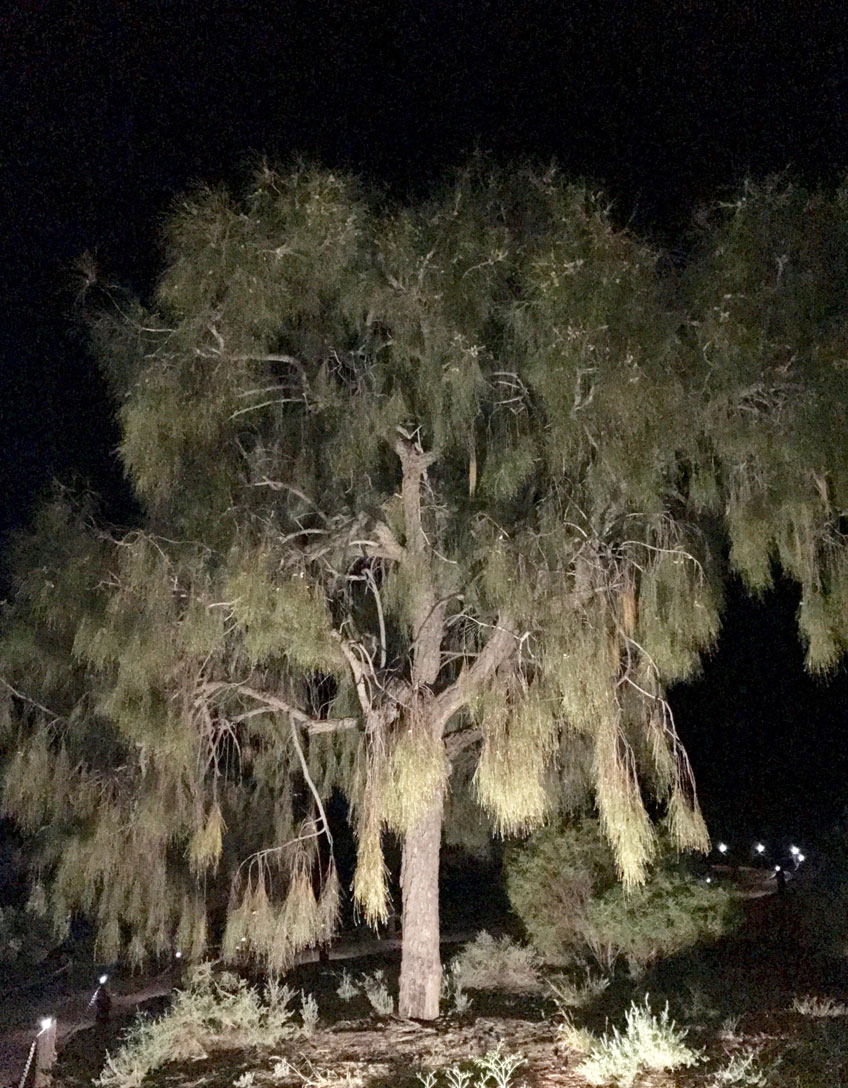Spring is finally here and we are thrilled to announce the Garden Clinic Spring Magazine will land in mailboxes early in the week.
It's jam packed with inspiration from around the country and beyond. Look out for yours this week in your mailbox, or head to the Garden Clinic 'Magazine' page and download your digital copy now.
New this spring the Garden Radio Round Up will undergo some changes to make it more practical and to include more of the tips and tactics we talk about
through the week on radio Talking Lifestyle and 2GB. We'll be filling this new blog with all the answers to the most common questions we get during
the show and on the Garden Clinic helpline through the week.
The new blog, 'In The Garden This Week', will be published every Friday and will be updated over the weekend during the Garden Clinic show. Plus we will
be including a link to the podcast of Linda and Graham on air so you can catch up on the shows you may have missed.
In The Garden This Week we hope will be another great garden info resource to help you get the best results in your garden.
The Garden Clinic on 2GB Podcast
Talking Lifestyle Talking Gardens with Linda Ross Podcast

Garden Clinic Spring magazine is out now.
Questions of the week
Q: Why is my Staghorn going brown?
Stags (like Platycerium superbum) are a fantastic and unique native plants that don't have root systems like other plants. Instead their roots
are only sufficient to attach them to a vertical surface like a wall or tree.

The humble staghorn, Platycerium superbum. Photo - Linda Ross
Stags and elks catch all the water and minimal nutrient they need to survive in the basket-like space they create with their fronds. So it's important
to remember that they will struggle under eaves where water is not free to drain down into the middle of the plant.
Stags will end up with reasonably large areas of brown felt-like patches under the fronds and beneath the outer layer of the body of the plant quite normally.
These are the spores - the plant is reproducing and with any luck you may find another little stag in a nearby tree soon!
Q:When do I feed my lawn?
Feed with controlled release lawn fertiliser to boost turf growth now with Neutrog Sudden Impact for lawns, Amgrow Shirley's No17, or Scotts Lawnbuilder.
Finish with a hose-on liquid seaweed like Seasol to strengthen grass and stimulate root growth.
Q: What's eating my Lilly Pilly?
We're getting a few reports of chewing damage on Lilly Pilly foliage. A relativly new pest affecting Lilly Pilly, the Paropsides calypso beetle,
can really knock your otherwise healthy hedge about.
According to our friends at OCP, "The adult beetle looks like a bright green ladybeetle (without spots) while the larvae are pale green, shiny grubs. Both
feed on the leaves and eat from the leaf edge in towards the middle. Mature larvae pupate in the soil and emerge as the beetle. "

Here's the culprit - the Lilly Pilly beetle, Paropsides calypso.
The larvae are quite slow moving, so you can pick them off quite easily. Scratching around the base of the plant may help reveal the larvae before they
emerge as fully-grown beetles. If you have chooks they will deal with these critters quite efficiently!
Spray regularly over the foliage with a mixture of Eco-neem and Eco-oil.
Q: Why aren't I getting avocados?
Firstly, a small avocado tree from the nursery won't start producing fruit for several years, so you need a little patience. Grafted trees will fruit more
readily than those grown from seed, which may take up to a decade to fruit.
According to our friends at Daley's Fruit Tree Nursery,
Avocados are best planted in pairs of A and B type groups. "Due to flowering habits, avocado varieties are categorized into A and B groups. One variety
is sufficient to produce adequate crops for the home garden, however by planting a tree from both groups the harvest will be much greater."
Avocados, like mangos, will also drop blossom and/or small developing fruit when stressed by conditions like too much or too little water, root damage
and soil compaction.
Q: How can i keep my roses pest-free
Our tried-and-true rose pest mediation measure is Sandra's Rose Spray applied at regular intervals. Mix up a batch today and safe-guard your roses through spring.
Q: Heard you today talking about blueberries. We bought a 'Burst' last week, do we need two plants?
Some blueberries are self fertile and some are not. Burst is self-fertile! It's safe to say all blueberries would produce more with two plants as pollination
increases and therefore your harvest. You can check out our blog, 'Make your Blueberry Burst' here for more information.
Planting now
Zinnias: So hot right now!
Zinnias are hot-weather, sun-loving, poor-soil tolerating, summer-flowering annuals. What more could we ask for? Sow once the weather warms to 20 degrees
C or get a head start by sowing seeds indoors. Each seed germinates within three days and will be ready to plant in two weeks, so time it well. Many
tall varieties will need staking with a single stake at the back of the plant. Tie a figure of eight with soft string to the main stem.

OMG! We're loving this Zinnia, 'Queen Lime Blush'
What's New: plants to love this week
Garvinea 'Sweet Memories'
This lovely little Gerbera (G. jamesonii) promises to be a real hit this spring. A succession of soft pink flowers with an inner collar of white
will be held tall above the healthy green foliage for most of the year.
winter hardy (even to minus 5), vigorous growers each plant yielding over 70 blooms per year, and flowers continuously over spring, summer and autumn.
Prefers a full sun to part shade position, suitable for pots and containers. Ideal cut flower. Very disease resistant.

Gerbera Garvinea 'Sweet Memories'
On the road: Travels this week
Graham at the rock
Graham and the Better Homes team went bush this week, shooting at Uluru, and the images look incredible!

Graham filming at Uluru
Graham was able to catch up with some old friends whilst there, like the majestic Desert Bull Oak, Allocasuarina luehmannii
Related to the She Oaks or Casuarinas found growing across Australia including the Queensland coastline.
This desert tree is dominate across the landscape around Uluru in the desert where summer temperatures can reach 50+C in summer.

Desert Bull Oak, Allocasuarina luehmannii
They grow to about 10-20m but over 100 years or more producing, from a young age one single trunk. The tree has two distinct habits of growth over time.
Local aboriginal people refer to the young trees as like young men with their arms pendulous and hanging down only producing upright branches in maturity.
The tree is actually found growing naturally across a vast region of eastern and southern Australia west of the Great Dividing Range across to the Murray
Darling Basin.
Amazingly it grows on a wide variety of soils from sandy loams to acidic, alkalinic and even moderately saline or salty soils.
Can be somewhat alleopathic, that is their leaves stop other plants from growing around them, but the bonus is their roots fix free nitrogen in the sogil
like legumes.
Its fine lacy needle-like but soft grey leaves are a great feature in any landscape like all the Casuarinas but be aware they like to grow by themselves,
but that could be a dramatic landscape feature.
Where most She Oaks have small marble sized cylindrical cones or fruit the Bull Oak has huge fruit capsules 4cm X 10cm in size.
Bon Voyage to our Outback Wildflower Safari tour
Libby Cameron and our guests have left Sydney this week on the Outback NSW Wildflower Safari.
We can't wait to see some of the images coming back in of the desert in full bloom.
Later in September it's Western Australia's turn as Angus Stewart and our guests see the glorious south-west coast in spring flower on the WA Wildflowers tour.
Early next year we'll be heading back to Asia with two incredible tours featuring lush tropical gardens and palatial hotels.

First pics are in!!! Libby and the gang have bumped into our dear friend and native wildflower expert from the back o' Bourke, Joyce. Looks like the wildflowers have not let us down this year.
The Paradise of Sri Lanka
A paradise island with incredible flavours, history and culture, Sri Lanka offers World Heritage sites, bustling cities, tea plantations, serene gardens and elephants! We'll visit the Parliament Building designed by world-famous
Sri Lankan Architect Geoffrey Bawa, regarded as having been one of the most influential Asian architects of the twentieth century.
Passage to Northern India
You will thrill at the beauty of Northern India,
the Taj Mahal, walk in majestic Mughal gardens, search for tigers and stay in royal style. We will stay at the magnificent Taj Rambagh Palace. The
Rambagh was the home of Jaipur’s royalty until 1957, and you’ll feel like a royal in its elegant rooms, marbled corridors and majestic gardens. The
grand verandah, with its glossy marble floors, imposing columns and magnificent views over the gardens is just the spot for a late afternoon glass
of champagne, accompanied by the sound of myriad fountains and the sight of strutting peacocks. You may even enjoy a game of croquet!

The grand Taj Rambagh Palace Hotel
You can see more of our tours at the 2018 Ross Garden Tours programme launch on Wednesday, September 13, 2017 at the Lion Gate Lodge, Mrs Macquaries Rd,
Royal Botanical Garden, Sydney at 11am. Meet the Ross Family over morning tea and learn about our Garden Tours for 2018.
Remember, bookings are essential! Go to the Ross Tours website,
or call Royce or Roslyn at Ross Tours on 1300 233 200 and book your place today.